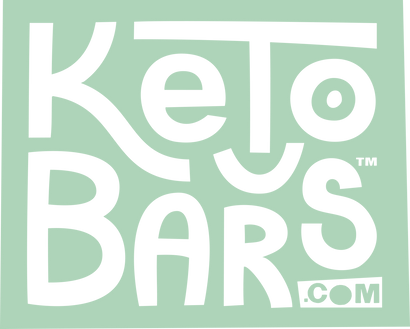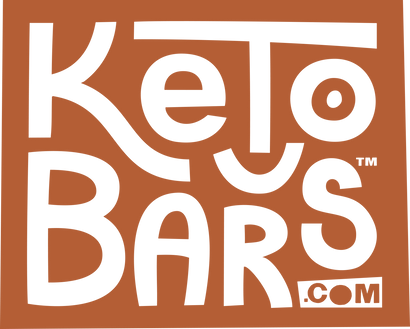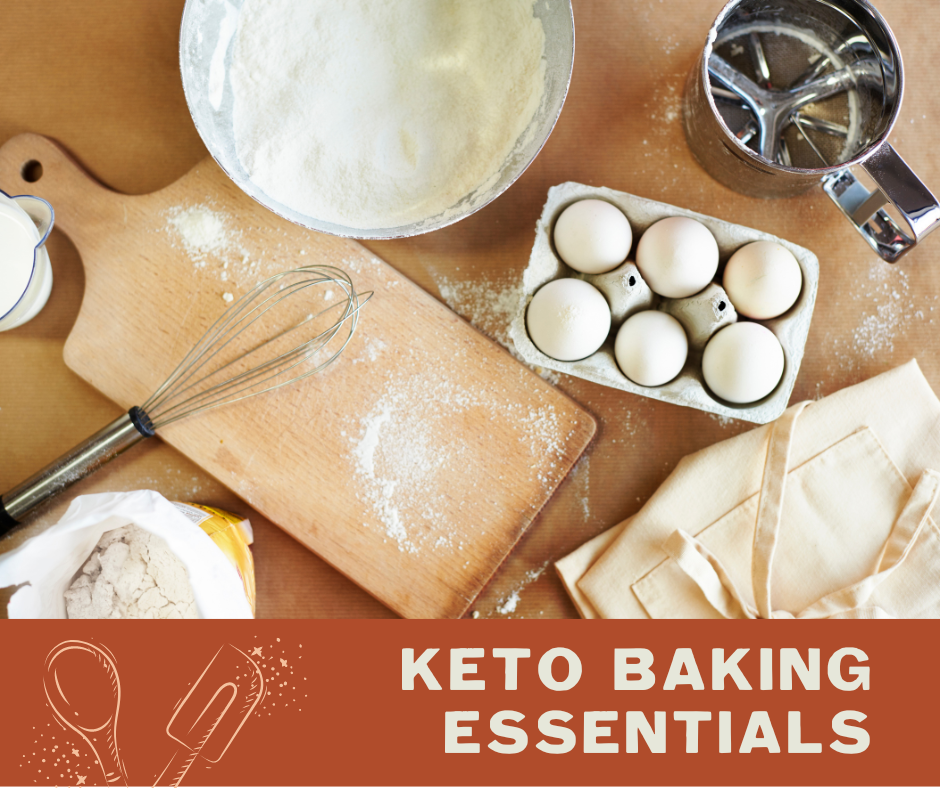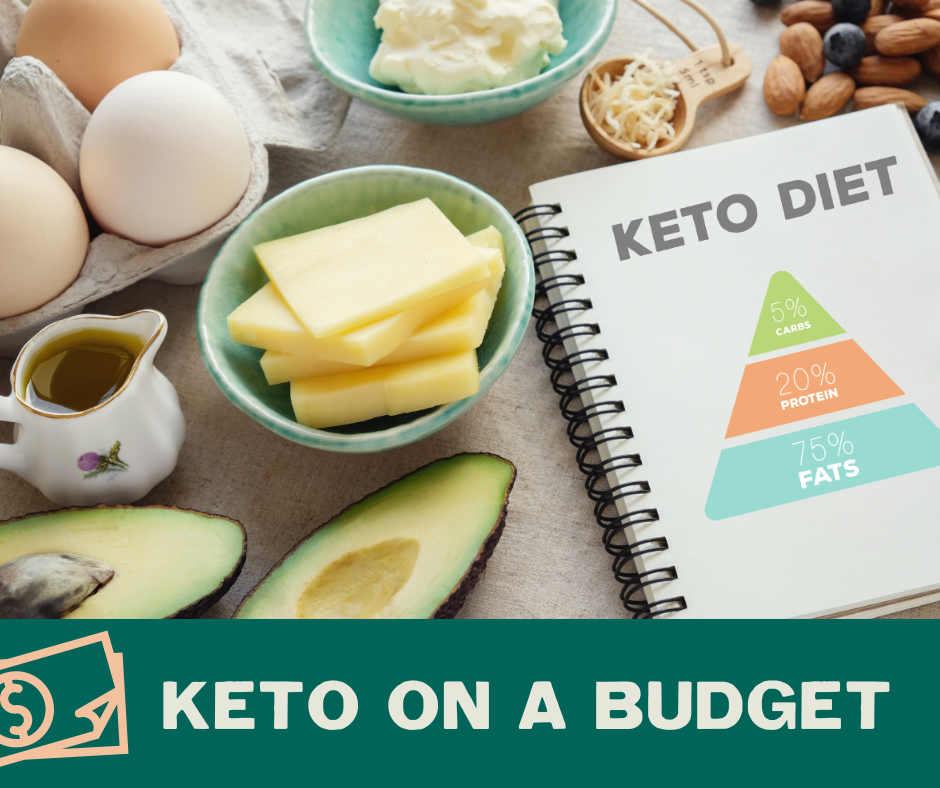Working Out On Keto: A Complete Guide

It's tempting, when starting a new diet, to plunge head-first into everything at once. You want to lose weight as quickly as possible, so you stock up on all your new diet foods and plan to hit the gym hard every day until you reach your goal. While this might feel right to you, it's really the worst way to start any new weight loss plan – including the keto diet.
The keto diet is a low-carb, high-fat diet plan that, if done correctly, turns your body into a fat-burning machine. After days (sometimes weeks) of eating this way, your body makes the switch from burning glucose to burning ketones for fuel. Combining exercise with the keto diet will maximize the health benefits and weight loss benefits of the keto diet while still maintaining lean body mass. Exercise helps maintain blood sugar levels and improves insulin sensitivity, all of which helps increase the efficacy of the keto diet. The problem is, your muscles use glucose when performing certain types of exercise.
So how do you exercise on the keto diet? What's the best way to accelerate fat loss if exercising the way you're used to isn't going to work? Let's discuss the effects of the keto diet on your exercise performance, what to keep in mind when launching an exercise plan alongside the keto diet, and how to get the results you want in the gym.
How To Launch An Exercise Plan On The Keto Diet
If you've ever done the ketogenic diet before, you know that the beginning of the diet is the hardest part. The transition from burning glucose to burning ketones as your main fuel source can be a bit brutal if you're not careful. That's because as your glycogen stores decrease, your body feels like it's running out of energy. If you transition too quickly away from a high-carb diet, you can experience symptoms of the keto flu. These symptoms include exhaustion and lack of energy, brain fog, muscle cramping (likely due to dehydration), and irritability. You're most likely to experience these things at the very beginning of your transition, and once you become keto-adapted, they'll subside.
This is important information because, depending on how you approach your exercise, it can either relieve or make worse the symptoms of the keto flu. Choosing the right types of exercise as you make your way into a state of ketosis will help you stay on track with as little pain and discouragement as possible.
Start Low And Slow
Transitioning to the keto diet is hard enough on its own without adding hard-core workouts into the mix. In the first week or two of your transition (depending on your energy levels and how your body feels), it's important to focus on lower-intensity workouts.
Low and slow means low-intensity aerobic exercises like rowing, walking, or biking (not spinning or speed-cycling, just a steady bike ride). It's important for you to move and get your heart rate up, but just as important for you not to overdo it. Light to moderate exercise at the beginning of this diet plan will help deplete your glycogen stores more quickly, which will help you reach ketosis more quickly – a great end result without making you feel terrible in the process.
Slower activities that nourish your body like stretching, rolling, and stability work are also great activities to start with as your transition into the ketogenic diet. Stretching and rolling help reduce and prevent muscle cramping (as does drinking lots of water), and stability work, like balance exercises and core training, helps keep your muscles engaged but not pushed to the max. Yoga, which incorporates both stretching and stability work, is a great way to move your body at the beginning of the keto diet.
High-intensity workouts or heavy weight lifting at the beginning of your transition, however, could make your keto flu symptoms worse. That's because these activities require a lot of energy from your muscles, which aren't optimized to keto yet. The effect of these more intense activities when you're not keto-adapted could mean more muscle cramping, lower performance, more exhaustion, and ravenous hunger. None of these things help you on your weight loss journey.
Steady Wins The Race
It can't be emphasized enough how important it is to know your body and listen to what it's telling you. This is true across all types of meal plans and workout routines, not just keto. Regardless of what type of change you're making, your body will be sending you signals along the way of what it can and can't do, what it does and doesn't like. How your body responds to changes will help you determine if you're on the right track.
In the case of exercise, as your body begins to use fat efficiently as your primary energy source, you'll be able to up the ante in the gym. As your energy level increases, so too can your activity level. But this is a gradual process – steady wins the race. If you're used to having super high physical performance in the gym, don't be discouraged if you're not back to your optimal level yet. It takes some time (and some strategic eating), but you'll get there. Some of the best activities for fat loss are low- to medium-intensity cardio, so continue with the brisk walks and moderate bike rides as you become more fat-adapted.
Extreme Efficiency
Once you're fully keto-adapted, it'll be easier to get back to your previous level of athletic performance. That being said, It's a tricky balance, as certain demanding physical activities still require glucose to fuel your muscles. Activities that require sustained maximal effort for anywhere between 30 seconds and 2 minutes will require glucose – ketones and fat won't work. So the sweet spots are on either side of those numbers: high intensity for fewer than 30 seconds (ATP for fuel) and moderate-intensity for greater than 2 minutes at a time (ketones and fat for fuel).
This isn't to say that you can't adapt your keto diet to do high-intensity interval training (HIIT) or CrossFit-type workouts on the keto diet, but you'll need to adjust your macros. It's also possible to do a modified HIIT-style workout that bypasses the need for glucose by making each interval last about 3 minutes. More on how to modify your diet in the next section.
The physiology behind how your body fuels your muscles makes heavy weight lifting and steady aerobic activity at 50-70% of your max heart rate are the best types of exercise for keto dieters. Weight lifting requires proper technique, so if you're not familiar with the best way to perform the movements, consider getting a training session or two at your local gym to make sure you don't hurt yourself. There are also lots of great resources online, including video content that can help you get started.
Calculating Your Fat Burning Heart Rate
The ideal heart rate for fat-burning is 50-70% of your maximum heart rate. This is considered "moderate exercise." Vigorous exercise takes your heart rate up between 70 and 85% of your max. While it's important for your cardiovascular health to get to that vigorous level from time to time, that 70% sweet spot will be the most optimal for your body when it's in a state of ketosis. That's because your body will be optimized to burn body fat. To calculate your maximum heart rate, subtract your age from 220.
For example, if you're 30 years old, your maximum heart rate will be 220-30=190 beats per minute (BPM). Your optimal heart rate for burning fat will be 70% of 190 or 133 BPM. Use a wrist monitor or chest monitor to help you stay in the zone while you're working out.
Weight Lifting

Weight lifting – a type of anaerobic exercise – is an important part of just about any fitness plan you'll find. Whether you're talking about using your own body weight in activities like pushups, pullups, or chin-ups, or moving free weights in the case of squats or bench press, pushing your muscles to move weight will put your fitness goals in the fast lane. This is true for both men and women.
While women tend to worry about weight-lifting causing them to bulk up, it's an unfounded concern. Women don't have enough natural testosterone to cause them to bulk up like a man when they lift weights. Even super heavy lifting won't do it without hormonal supplementation. Rather, weight lifting will not only help you tone up, the muscle you build will help optimize fat loss and get you to your goals a lot more quickly.
The most efficient way to use weight lifting to your metabolic advantage is to choose exercises that engage large muscle groups. These exercises include squats, lunges, overhead press, pullups, and bench press. While you certainly can add more focused exercises to strengthen smaller muscles or target your personal areas of concern, incorporating these strength training exercises into your routine will help you build muscle mass and optimize your metabolism.
The best way to lift weights and get stronger on the keto diet is to move heavy weight, 5 to 8 reps at a time for 3 or 4 sets with at least three minutes of rest between sets. The short sets keep your muscles from needing glucose, while the long rests allow your body to build up ATP for the next set.
High Intensity Interval Training (HIIT)
The idea behind HIIT is to go as hard as you can for a very short period (10 seconds to 2 minutes), then rest, then repeat. The end result is a workout that creates dynamic heart rate variability and turbo-charges your metabolism.
But in the case of keto dieters, HIIT workouts need to be performed strategically. If you keep the work intervals at under 10 seconds and allow for that longer 3-minute rest between sets, you can make HIIT work for you without your performance suffering. The other way to do it is to have longer, 3-minute work sets (and also 3-minute rests) to get your body into the aerobic state. (It's obviously a lot harder to go 95-100% for 3 minutes than it is to go for 10 seconds, so it's up to you!)
What won't work is the timing in between. Work sets that last between 15 seconds and 2 minutes will require glycogenesis to fuel your muscles, so you won't get the performance you're looking for while on the keto diet. You'll also get a lot more tired a lot more quickly. However, there are ways to adapt your diet to get the best of all worlds.
How To Eat While Exercising On The Keto Diet
Just like with many other weight loss plans, as you increase your physical activity on the keto diet, you'll also want to increase your caloric intake to make sure you're not starving your muscles. The type of calories is what's different about the keto diet vs others. Hardcore endurance athletes tend to carb load before a big workout. This strategy helps ensure that they have enough glycogen stores to fuel their muscles during intense training sessions. But keto is a very low-carb diet, so a big bowl of pasta the night before your big day is just going to kick you out of ketosis and make things harder down the line.
That's not to say that you can't (or shouldn't) slightly increase your carb intake if you're doing some heavy exercise. But it's also important to increase fat intake, and if you do plan to slightly up your carbs to help you sustain a solid HIIT workout or longer weight lifting session, timing is everything.
Targeted Ketogenic Diet
If you find that you're getting super exhausted during and after your workouts, you might consider making an adjustment to your macros. The targeted ketogenic diet approach (TKD) adds in 25-50 grams of carbs 30 minutes before your hard workout. This approach will temporarily lower your ketones, but if you combine it with MCT oil, which helps your body produce ketones and burn fat, then you will get back into ketosis more quickly after your workout.
The carbs you'll be eating if you plan to do targeted keto should be fat-free, low-fructose, very simple carbs. In any other context, these foods aren't considered "healthy" per se, but they'll get you the energy you need to fuel your workout. They include foods like gummy bears, hard candies, Gatorade, Powerade.
The other option is the cyclical ketogenic diet (CKD), which involves choosing a day or two a week to eat more carbs, but this approach is really more ideal for high-performing athletes and not really necessary for the average keto dieter.
Going Keto As An Average Exerciser
The reality is that most people using the keto diet for weight loss or blood sugar control aren't elite athletes. If your regular workout routine is a long walk with the dog or an hour of swimming laps, chances are high that you'll do just fine exercising on the standard keto diet. Making adjustments like TKD and CKD are more ideal for those who engage in high-intensity exercise, CrossFitters, and demanding sports. Even endurance athletes have been shown to be fine on the standard keto diet for the longer-term.
The most important thing to remember is to take exercise slowly if you're new to the keto diet. Understanding the process your body is going through to reach the fat-burning state of ketosis will help you moderate your activity until your body is ready to handle more. Start off with a gentle approach to help you reduce the amount of time you'll experience keto flu symptoms and lower your risk of making them worse. As you get more fat-adapted, you'll begin reaping all the benefits of the keto diet, and exercise will only move things along more quickly.
For a convenient way to stay on track with your keto diet, consider trying KetoBars. Visit KetoBars.com to browse our selection and find the perfect snacks to support your keto journey.

Toni Sicola
Toni is a wellness professional with a Master's in Integrative Health, is passionate about spreading health, happiness, and personal fulfillment to as many people as possible. She has a professional background in health and wellness, dietary supplements, and nutrition, and embarks every day to live a well, balanced, happy life.
Published: February 2, 2021
Love this blog post? Share it on social!
WHAT TO READ NEXT
Keto for Intermittent Fasting: Timing, Snacks, and Best Practices
If you are doing keto, you’ve probably heard that intermittent fasting can supercharge your results. But, is this really true? Can you do keto while fasting?
It’s true that intermittent fasting can have great benefits while you are on a keto diet. However, mastering this powerful duo is more than just skipping meals (or not eating) or simply cutting carbs.
Whether you are new to keto, intermittent fasting, or both, it’s important that you understand how to properly fast while doing keto. Otherwise, you might not get the results that you are after.
This guide will walk you through everything you need to know about how to snack during fasting, break your fast properly, and create a sustainable intermittent fasting keto plan.

What is Intermittent Fasting?
Intermittent fasting (IF) is a type of eating pattern that cycles between eating periods and fasting. Unlike traditional diets that focus on what you eat, IF emphasizes when you should be eating.
There are many different forms of practicing intermittent fasting. It is all going to depend on how long you want your fasting hours to be. Here are some of the most common practices:
-
16:8 Method: Fast for 16 hours and eat during an 8-hour window.
-
18:6 Method: Fast for 18 hours and eat during a 6-hour window.
-
OMAD (One Meal a Day): Fast for 23 hours and eat one meal a day.
-
5:2 Method: Eat like you normally would for 5 days and restrict your calories for 2 days (typically eating 500-600 calories).
During your fasting windows, you consume only water, black coffee, plain tea, or other zero-calorie beverages. During your eating window, you are allowed to consume your daily calories and nutrients.
Remember that if you are combining keto with intermittent fasting, you should focus on a high-fat, moderate–protein, and low-carb diet.
Metabolic Benefits of Combining Keto with Intermittent Fasting
So, what happens if you combine keto with intermittent fasting? You might create several powerful metabolic benefits.
-
Enhanced Ketosis: Fasting depletes your glycogen stores (your body’s way of storing excess glucose) faster. This helps you to enter ketosis quicker and maintain a deeper level of ketone production.
-
Improved Insulin Sensitivity: Both keto and IF can independently improve insulin sensitivity. Together, they may help significantly reduce insulin resistance, thereby stabilizing blood sugar levels and reducing cravings.
-
Accelerated Fat Loss: The combination of keto and IF creates the best conditions for fat breakdown. Keep in mind that both work by promoting a caloric deficit (eating fewer calories than you need). If you still eat more (even if you are doing keto or IF), you might gain weight.
-
Mental Clarity and Focus: Many people have reported having improved cognitive function. Ketones provide a steady source of energy for the brain, while the fasting periods eliminate the energy crashes that are often associated with frequent meals.
-
Cellular Autophagy: When you have extended periods of fasting, it triggers autophagy (your body’s natural way of clearing out unwanted cells). In fact, research has shown that this can help support longevity and reduce the risk of certain illnesses.

How to Break Fast the Right Way
It doesn’t matter if you follow your fasting hours perfectly; if you don’t know how to break your fast, you might be jeopardizing your results. Here are some tips to help you break your fast properly to stay in ketosis and avoid any digestive discomfort.
-
Start Small: Begin with a small portion to prevent any stomach issues (especially if you are doing very long fasts).
-
Prioritize Healthy Fats: Since you are following keto, make sure that fats (which are your primary macronutrient) are present while you break your fast. Some great choices include avocado, nuts, or slices of salmon.
-
Include Quality Protein: Add a moderate amount of high-quality protein like eggs, grass-fed meat, or wild-caught fish to help support muscle mass and satiety.
-
Reduce Carb Intake: A keto diet doesn’t mean no carbs. It just means that you have a lower intake, usually between 20 and 50 grams. Avoid any simple carbs (sugary foods or drinks) and focus on fiber-rich carbs like leafy greens, tomatoes, or cauliflower.
-
Hydrate Properly: Make sure that you drink plenty of water. And, if necessary, consider adding some electrolytes.
The Best Keto Snacks to Have During Your Eating Window
Choosing the right snacks during your eating window is going to help you keep your ketosis while helping you stay satiated. Here are some of the best options:
-
Nuts and Seeds: Almonds, walnuts, macadamia nuts, and pumpkin seeds provide healthy fats and protein. Just be careful with the portion size since they can pile on the calories.
-
Cheese and Dairy: Full-fat cheese, Greek yogurt (unsweetened), and cottage cheese offer protein with a low-fat content. They can be a great pre-workout or post-workout option.
-
Avocado-Based Snacks: Guacamole with cucumber slices, diced avocado with salt and lime, or an avocado smoothie can be a great snack to add.
-
Hard-Bioled Eggs: They are the best portable protein option. You can try them with everything bagel seasoning or hot sauce.
-
Vegetable Chips: Kale chips, zucchini chips, or radish chips provide you with a delicious crunch without adding carbs. You can make them at home or buy them on Amazon.
-
Fat Bombs: These treats are usually made with coconut oil, nut butter, and low-carb sweeteners. They are a great way to boost your energy levels and the perfect sweet treat.
-
Snack Bars: They are the most convenient option when you need something on the go or when you are too busy to make your own snack.
Final words
Combining keto with intermittent fasting can be a great way to boost your results. However, keep in mind that the results you get from both are going to depend on the food choices you make during your eating window.
When it comes to health and weight loss, remember that consistency matters more than perfection. If you are not used to fasting, start with a small fasting window and start increasing it as you feel more comfortable. This is going to help you achieve long-lasting results.
If you are looking for the perfect snack to have during your eating window, our premium keto bars are perfectly formulated to fit your macros and satisfy your cravings. They are made with clean ingredients and delicious flavors, making them the best companion for your keto intermittent fasting success.
How to Stay on Keto During the Holidays: Your Keto Holiday Survival Guide
The holidays are almost here! Cozy gatherings, sparkling lights, and tables overflowing with treats. But if you’re living the keto lifestyle, you may already know this season can feel like a minefield of carb-heavy temptations.
Between Grandma’s stuffing, frosted cookies, and champagne toasts, it’s easy to wonder: how do I stay on track with keto without missing out on the joy of the season?
Well, we’ve got some good news: there are plenty of ways to celebrate the season and still keep your keto holidays stress-free. With a little planning, the right mindset, and some delicious keto holiday recipes in your back pocket, you can celebrate without feeling deprived.
In fact, this season might even become one of your favorites on keto. A time to enjoy satisfying foods, connect with loved ones, and stay aligned with your goals.
In this guide, we’ll explore why holidays can be tricky for keto eaters, share practical strategies for navigating parties and gatherings, and highlight keto-friendly recipes that bring all the festive cheer without the carbs.
Why Holidays Can Be Tough on Keto
The holiday season is joyful, but let’s be real: it also comes with challenges for anyone sticking to a specific eating plan. For keto folks, the hurdles are especially clear:
-
Temptations everywhere. From pumpkin pie and cinnamon rolls to mashed potatoes and carb-heavy casseroles, the table is usually stacked with foods that can quickly push you out of ketosis.
-
Social pressure. Friends and family may encourage you to “just have one bite,” or ask why you’re skipping certain dishes. Sometimes it’s even trickier when it comes from loved ones: like Mom insisting you try her famous stuffing, or Grandma giving you the side-eye when you pass on her bread rolls.
-
Travel and unpredictable meals. Being away from your kitchen and your usual food routines can make sticking to keto harder.
The key is not to avoid every holiday moment, but to go in prepared. Instead of thinking in terms of restriction, focus on creating a strategy that allows you to enjoy what the season has to offer while still protecting your goals.
Smart Strategies for Enjoying Your Keto Holidays
1. Plan Ahead

Walking into a party starving and without a strategy is a recipe for disaster. A little preparation goes a long way.
-
Start by eating a small keto-friendly meal or snack before you head out – something with protein and fat to keep you satisfied.
-
If you’re going to a potluck or family gathering, offer to bring a dish you love. Not only does this guarantee you’ll have something keto and high-protein on your plate, but it also introduces others to the idea that keto holiday recipes can be every bit as festive and delicious.
-
Dining out? Take five minutes to check the menu online so you know your best options. Look for meals centered around protein (like grilled steak, salmon, or chicken) and pair them with low-carb sides such as steamed veggies or a side salad. Many restaurants are open to substitutions, so don’t hesitate to ask for extra greens instead of fries or rice.
This approach turns holiday events from stressful to enjoyable, because you already know you’ll have something delicious and satisfying on your plate.
2. Focus on Protein & Fat First
When it’s time to fill your plate, head straight for the proteins and healthy fats: roasted turkey, glazed ham, prime rib, cheese platters, deviled eggs, smoked salmon, or low-carb veggie sides drizzled with olive oil or butter. These foods are naturally satisfying and keep your macros in check.
Prioritizing protein and fat not only helps you stay in ketosis but also keeps hunger and cravings at bay. Research shows that protein increases satiety and reduces overall calorie intake compared to carb-heavy meals.
By choosing nutrient-dense options first, you’ll feel full, energized, and far less tempted by bread, stuffing, or sugary desserts.
3. Navigate Alcohol & Drinks

Drinks flow freely during the holidays, and many are loaded with hidden carbs.
Your best bets are dry wines (red or white) and spirits like vodka, gin, tequila, or whiskey (served neat or with soda water). If you’d like something special, check out these keto-friendly cocktails.
Not drinking? You’re not missing out! Sparkling water with lime, flavored seltzers, or festive non-alcoholic keto drinks can keep things fun without sugar overload.
A good rule of thumb: alternate each alcoholic beverage with water or a mocktail. This keeps you hydrated, supports ketosis, and makes it easier to stay in control while still enjoying the party.
4. Handle Social Pressure Gracefully
Sometimes the hardest part of keto holidays (or any holidays) isn’t the food, it’s the people. You may hear: “It’s Christmas/Thanksgiving, just enjoy yourself!”
Here are a few ways to respond kindly but firmly:
-
“No thanks, I’m really enjoying this [insert keto dish you’re eating] – it’s delicious.”
-
“I feel great eating this way. It really works for me.”
-
Or simply change the subject toward the holiday spirit: ask about travel, family traditions, or plans for the New Year.
Shifting the focus away from food helps reinforce that holidays are about connection, not just what’s on your plate.
Keto-Friendly Holiday Recipes to Try
You don’t have to miss out on holiday favorites: you just need keto-friendly swaps.
Here are some festive ideas to keep your holiday tables joyful and low carb:
Holiday Cheese & Charcuterie Wreath

Nothing says celebration quite like a charcuterie board, and this one is keto-friendly with a fun surprise.
Loaded with savory favorites like prosciutto, manchego, olives, and pickled veggies, it also includes a touch of sweetness from chopped Keto Bars and sugar-free cranberries.
Beautiful to look at and easy to assemble, it’s the perfect centerpiece for holiday parties and a guaranteed crowd-pleaser.
Instant Pot Loaded Cauliflower Mash

Cheesy, garlicky, and topped with all the fixings, this Loaded Cauliflower Mash is the ultimate low-carb comfort food.
Made quickly in the Instant Pot and finished with sour cream, cheddar, and bacon, it’s a satisfying side that rivals mashed potatoes in both texture and flavor.
At just 10g carbs per serving, it’s a lighter alternative you’ll want on repeat during your keto holidays.
Low Carb Peanut Butter Chocolate Dream Bars

If you’re craving something decadent, these Peanut Butter Chocolate Dream Bars are pure holiday magic: creamy, crunchy, and chocolatey without the sugar crash.
With a base made from Keto Bars, a luscious peanut butter–cream cheese layer, and a fluffy whipped cream topping, they’re a showstopper dessert that even non-keto guests will love.
Plus, at just 3g net carbs per serving, they’re proof that keto holiday recipes can be both festive and guilt-free.
These recipes prove that keto holiday recipes aren’t about sacrifice: they’re about creative swaps that taste just as good (if not better) than the originals.
Mindset Matters: Progress Over Perfection
One of the biggest holiday gifts you can give yourself is grace. If you slip up and have a bite of pie or a handful of cookies, don’t spiral into guilt or try to compensate the next day. Simply enjoy the moment, then get back into your keto routine at the next meal.
One meal won’t undo months of progress. What matters most is consistency over time. Staying positive, flexible, and focused on the bigger picture helps you avoid the all-or-nothing mindset that can sabotage long-term success.
And remember: the holidays are ultimately about gratitude, connection, and making memories – not about sticking to a perfect diet.
Long story short…
The holiday season can be one of the most joyful times of the year, and your keto lifestyle doesn’t have to get in the way. With smart planning, a focus on protein and fat, mindful choices about drinks, and a collection of delicious keto holiday recipes, you’ll manage to stay in ketosis AND feel empowered, festive, and satisfied.
So here’s your gentle reminder: keto holidays can be both fun and delicious. You’ve got this!
Want more recipes, practical tips, and inspiration for living keto year-round? Subscribe to our newsletter and get keto holiday recipes and strategies delivered right to your inbox!
____
— Mariana Pinhão, in collaboration with Keto Bars.
Mariana is a wellness and nutrition writer who helps brands share trustworthy health content that readers actually enjoy. With a science background and a love for good food and kind living, she brings both accuracy and heart to every piece she writes.





